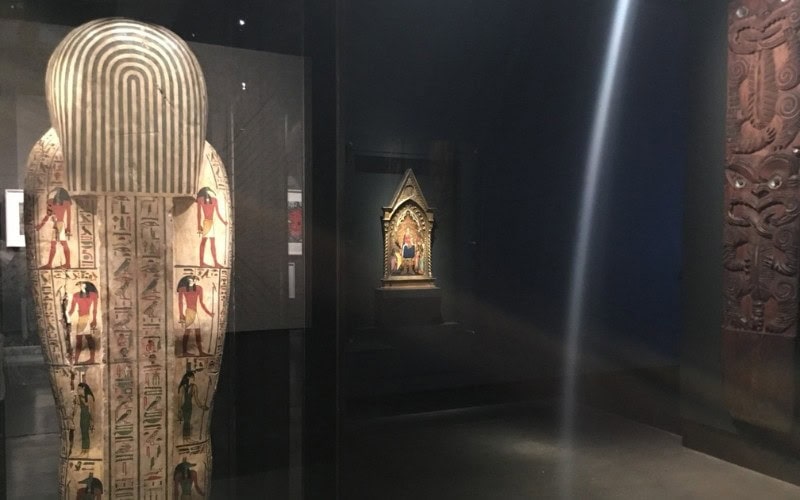Why Visit the Museum of Old and New Art in Hobart, Tasmania
Artsy Traveler contains affiliate links for products and services I personally use and can happily recommend. As an Amazon Associate, I earn from qualifying purchases. Please read the Disclosure for more information. If you make a purchase through these links, at no additional cost to you, Artsy Traveler earns a small commission. Thank you!
Written by Linda Moore for Artsy Traveler
Overview
If you’ve made the trek to Hobart, Tasmania, put a visit to the Museum of Old and New Art (MONA) at the top of your list of things to do.
Despite its remote location, MONA is a world-renowned art destination—and a must-visit for the artsy traveler.
As the name of the museum suggests, you’ll discover galleries full of an eclectic variety of art from ancient Egypt to the 21st century.
In this post, find out about the origins of MONA and how you get there, along with guest poster Linda Moore’s personal recommendations about what to see.
What is MONA?
The creation of professional gambler turned art collector David Walsh, MONA will appeal to art lovers interested in experiencing a stunning and occasionally subversive collection of old and new art coupled with impressive architecture.
Walsh, a controversial figure with an impressive bank account, built Australia’s largest privately owned museum and art gallery for his own amusement and to provide a landing place for art that interests him. Almost everything about MONA is different from other museums.
Check out the MONA website and read the content. Even ordinary information such as how to visit MONA is presented with a quirky twist.
MONA’s Collection
The essence of MONA is not its eccentricities, but its private collection of artwork, and Walsh does not disappoint. MONA displays pieces from a full range of the history of art.
This eclectic art museum includes antiquities from ancient Egypt, along with pieces from the European Renaissance, and Pacific Islanders.
You’ll find an Egyptian sarcophagus and Asian scrolls along with modern art such as Georgia O’Keefe’s flowers and provocative contemporary art pieces such as Matthew Barney’s genitalia.
Arriving at MONA
If possible, arrange to arrive at the Museum of Old and New Art (MONA) by water.
The 25-minute ferry ride from Hobart in Tasmania brings into dramatic focus a clifftop complex that rivals any of the major museums of the world.
You can choose two options for your ride–Standard or Posh Pit. The website describe the Posh Pit option as:
Escape the riff-raff in the ferry’s private lounge, bar and deck. Includes complimentary bevvies, tiny food and inflated egos.
See what I mean about the museum’s unique approach to organizing the visitor experience?
Climbing to the Museum
To reach the museum entrance from the ferry dock, you’ll need to climb 99 steps. There is also access via tunnel for people with mobility issues. The website advises you to inform staff before you arrive if you quaify.
If you wish to avoid the ferry ride, you can travel to the museum by car. Located on the Berriedale peninsula, MONA is a 20-minute drive from Hobart.

Why I Love MONA
MONA is an art gallery that draws me and others who travel the world to see art because we want to discover artists we don’t know about–artists whose original ideas are not derivative of the major art scenes in New York or Berlin.
Enjoying this post? Subscribe to Artsy Traveler to Receive Valuable Travel Tips and Your FREE Guide: 25 Must-Do Artsy Traveler Experiences in Europe for 2025
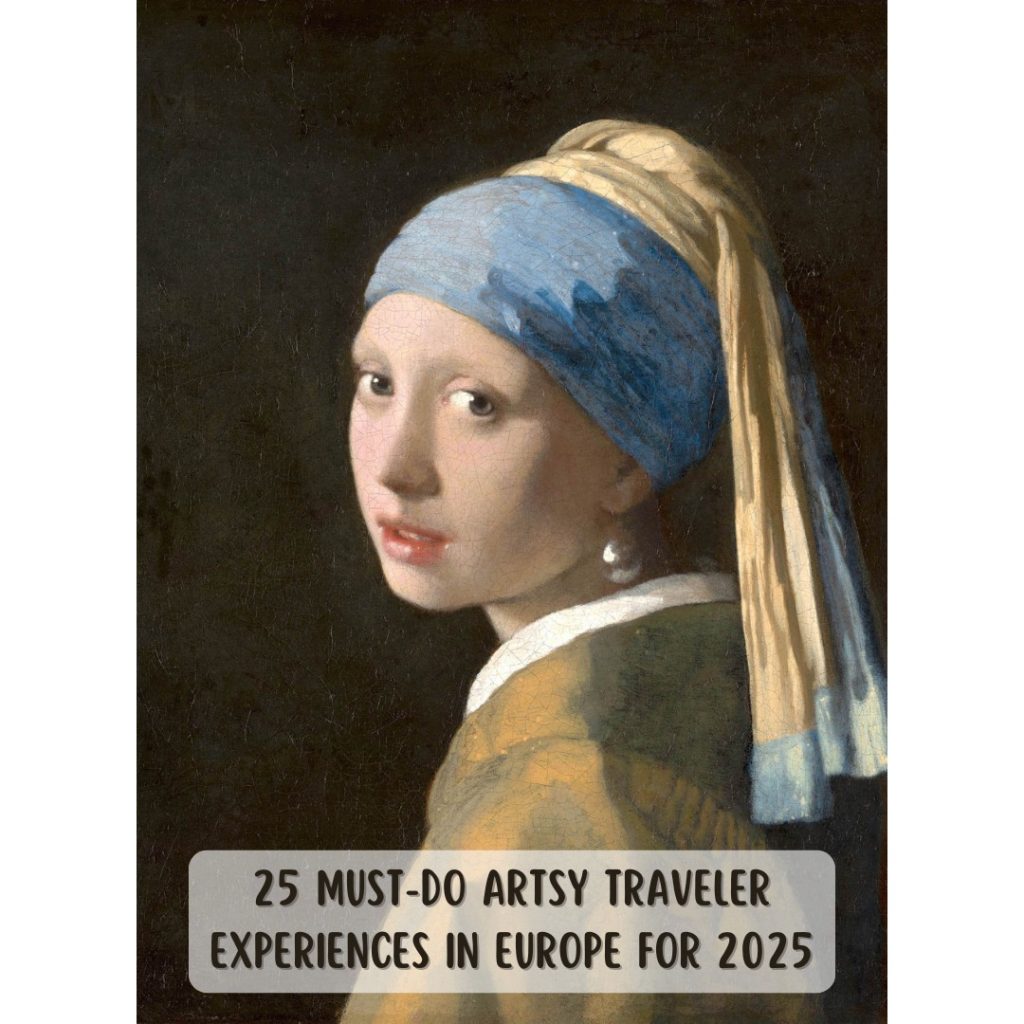
Similar to traveling to the Venice Biennale or Documenta, a trip to MONA exposes you to new art and new ideas.
For example, Azerbaijani artist Faig Ahmed’s woven fiber pieces use an ancient art form in a contemporary way. His work appeared in the Venice Biennale and later was added to a show at MoMA in New York.
But how many of us know about art in Azerbaijan?
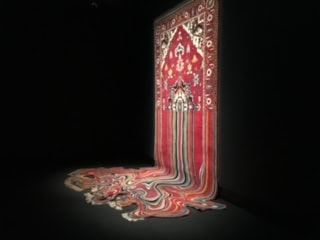
David Walsh’s collection spans the globe and his curators are always on the hunt for fresh ideas from artists whose works may never be seen by curators from big international institutions.
MONA’s Installations
The site-specific installations at MONA are the showstoppers.
Examples include Yayoi Kusama’s room with dizzy dots and the two-story waterfall by German artist Julius Popp that spills text generated by 128 computer-controlled nozzles streaming words from real Google searches.
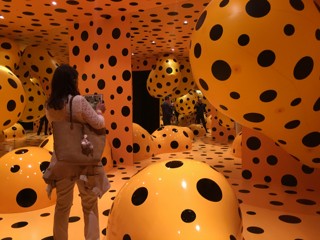
Generous budgets and plenty of space provide artists with creative opportunities that may not be possible in large city museums.
For example, an $18 million tunnel completed in 2019 houses works by Chinese artist Ai Weiwei, who spent time in prison for his art.
The Divine Comedy, a light installation of hell, purgatory, and paradise by one of my favorites, Chilean-born artist Alfredo Jaar.
What Else to See a MONA
MONA is more than just art galleries. The complex includes restaurants, bars, a winery, a gift shop and even accommodations.
Dining and Staying at MONA
There are several dining options at MONA. You can enjoy lunch at the Source Restaurant or Faro Bar & Restaurant.
If you want to stay, there are accommodation pavilions, described as “super flash luxury dens on the River Derwent” that are each named after an influential Australian artist or architect.
MONA Gift Shop
The MONA Gift Shop is eclectic as the collection. If you’re not able to go to MONA in person, browse the gift shop online.
Moorilla Winery
MONA is also home to one of Tasmania’s oldest vineyards. In the museum’s bars and restaurants, you can sample small-batch, premium Moorilla wines made from fruit grown on the Moorilla estate.
You can also visit the cellar and partake of wine tastings.
When to Visit MONA
Schedule at least a day-long visit so you can view the James Turrell light pieces like Pharos (named after the lighthouse in Alexandria) inside a tunnel and then remain until sunset to sit outside under Turrell’s Amarna project that glows and changes as the sunlight in the Southern hemisphere disappears.
Stunning!
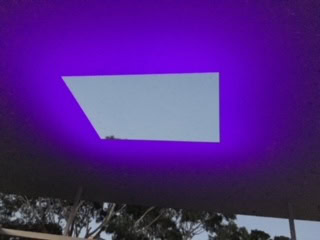
Shore lights twinkle as you travel back to Hobart on the night ferry and the peaceful channel creates space to ponder the impressive art experiences you’ve enjoyed at MONA.
Tours & Tickets in Hobart
Here are some other options for things to do in Hobart.
This Tasmanian Devil tour looks particularly interesting!
Practical Information
MONA is only open Friday to Sunday, so temporary exhibitions are displayed for five to six months. You must purchase your ticket in advance and ensure you have reservations for everything you want to see.
Conclusion
Have you visited MONA and Hobart? What did you think? Share your comments and suggestions with other Artsy Travelers!
Guest poster and novelist Linda Moore takes artsy travelers on a journey down under to remote Tasmania to experience the Museum of Old and New Art (MONA). Find out more about Linda Moore and her novels, including Attribution set in Spain and Five Days in Bogota, a contemporary, art-based thriller set in Colombia.
Here are some other contributions from guest posters to help you with your travel planning:
- Hidden Gem: Santa Maria del Popolo in Rome by Andie Easton
- Buying a House in France by Zoe Disigny
- The Joys of Exploring the World with Small Group Tours by Julie H. Ferguson
Have you traveled to MONA? Share your suggestions and experience in the comments below.
